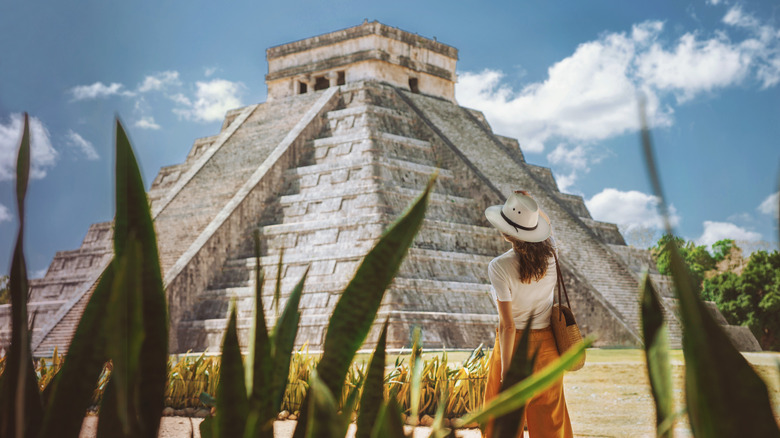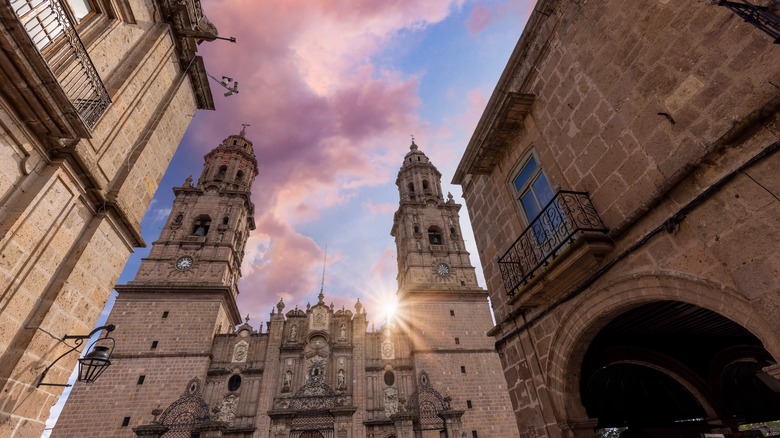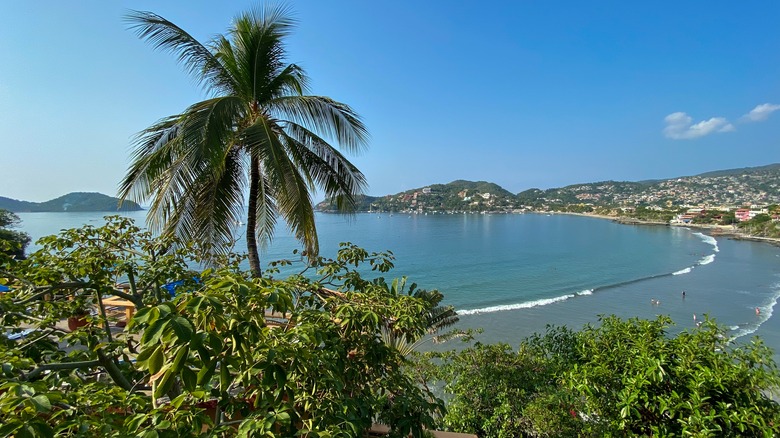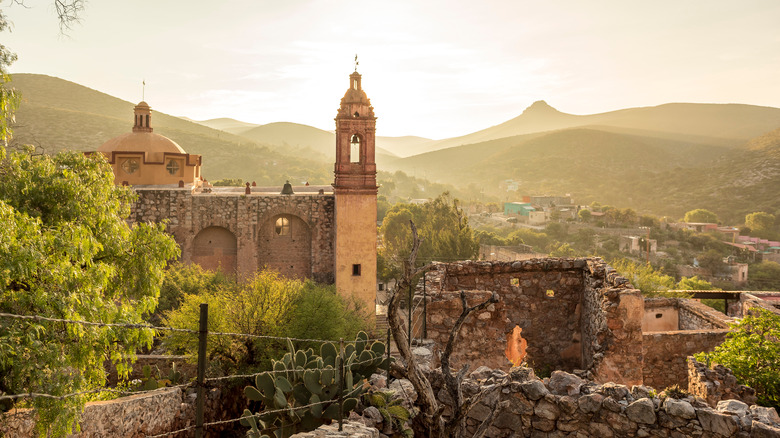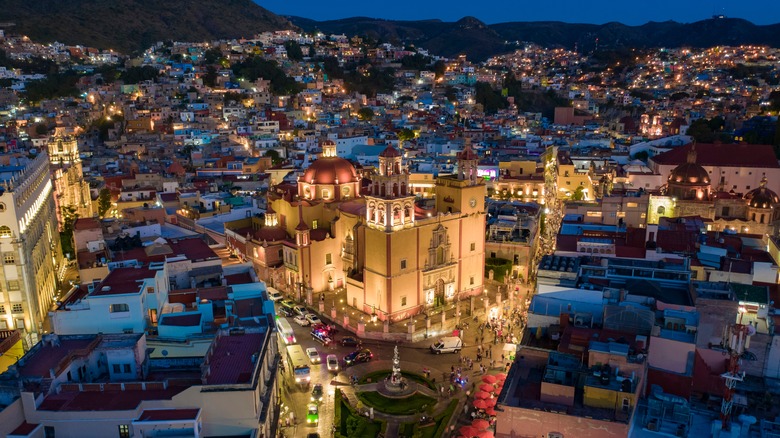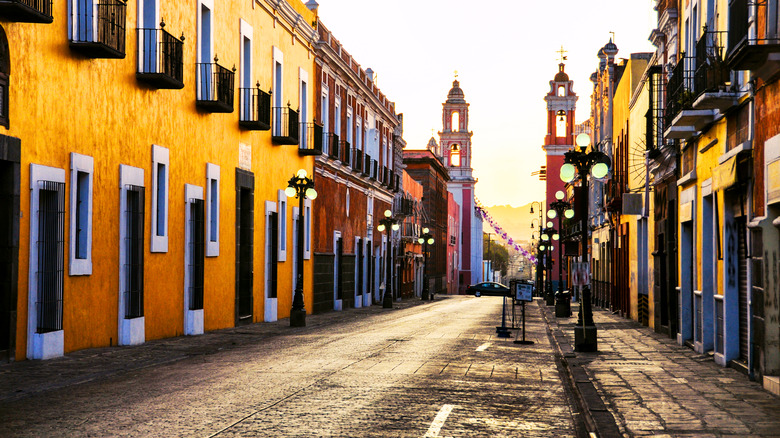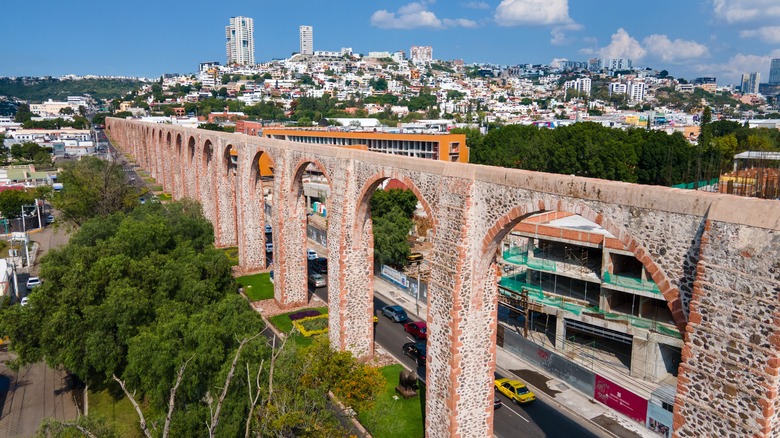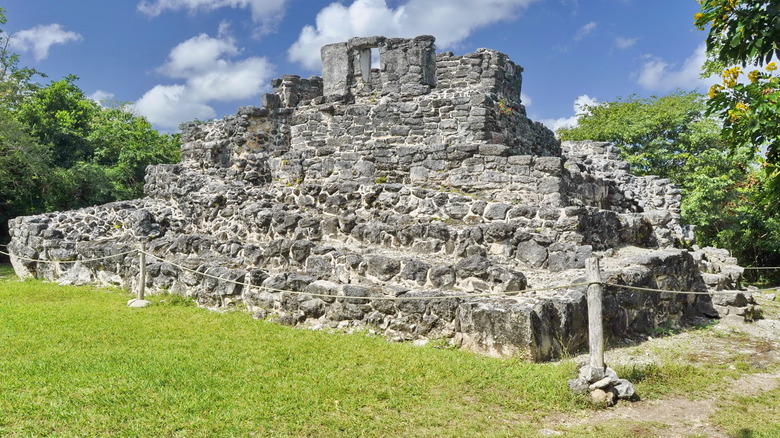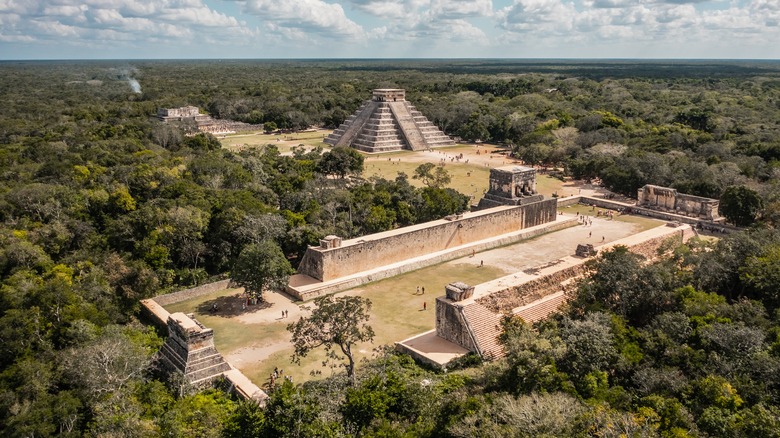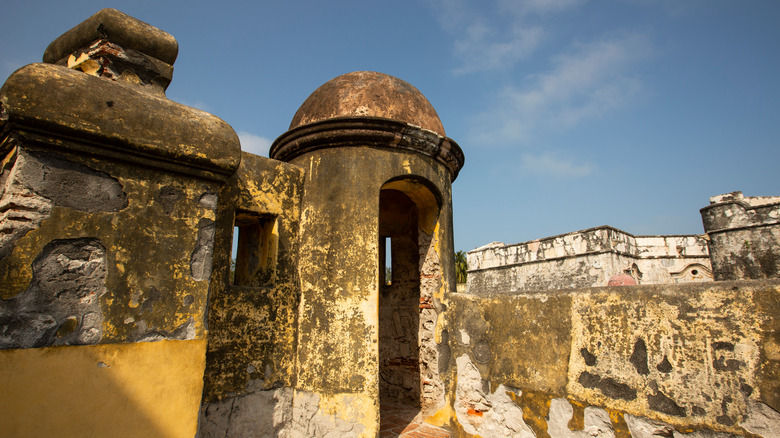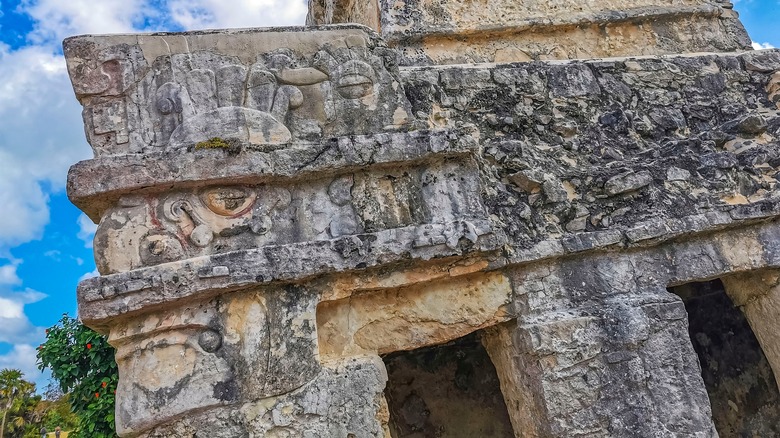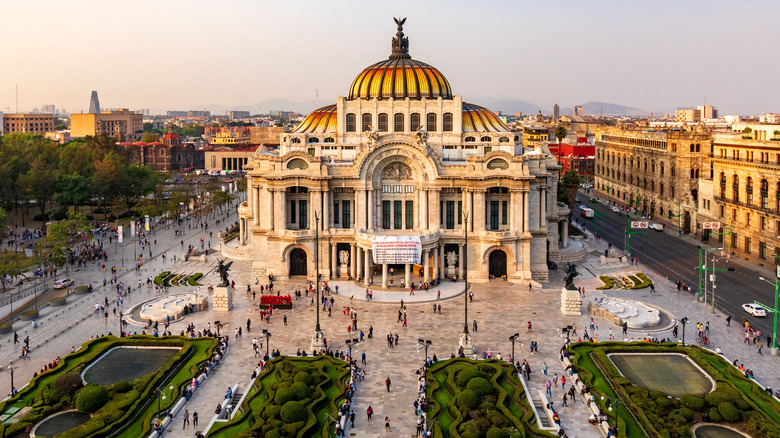Best Places In Mexico That History Buffs Should Travel To
Mexico is a nation teeming with history. In addition to its natural beauty and array of wondrous resorts, there are always new and exciting things to see directly related to some of Mexico's most important historical events, no matter where you are in the country. Having been settled by Spanish explorers in the 16th century, there are numerous ties to Mexico's intricate past, including various archeological ruins predating Spain's arrival to the New World.
Included among these sites are temples of Mesoamerican origin, ranging from complex Mayan and Aztec civilizations to smaller Indigenous American groups spanning across Mexico. Moving ahead, you have battlefields and historically significant landmarks from Mexico's War of Independence, the Mexican-American War, and the two separate French interventions in the country. Along with those, there are major sites connected to the decade-spanning Mexican Revolution of the early 20th century, a turning point in the country's history that helped shape Mexican politics as we know it today.
Incredibly, many of Mexico's most important, must-see locations are still available to see today. Carefully preserved over decades (and in some cases centuries), these historical sites range from coastal communities like Veracruz to sprawling cities like Santiago de Querétaro and, of course, Mexico City. For all the hardcore history enthusiasts out there thinking about your next international vacation, here are some of the most remarkable Mexican locations we recommend visiting.
12. Morelia, Michoacán
The capital city of Michoacán, Morelia has numerous places of historical interest within the state. In Morelia's Historic Center, you can find the wondrous Morelia Cathedral, an 18th-century building of Baroque influence that now houses the Archdiocese of Morelia. Within the walls of Santuario de Guadalupe y Exconvento de San Diego (a church dating back to the 18th century), you can find pieces of artwork detailing the Spanish Church's arrival to Mexico, as well as their first interactions with the Indigenous peoples in the area. In terms of sites around the city, there's the Acueducto de Morelia, constructed by Indigenous Americans to combat a lengthy drought in the 1700s.
Morelia also offers a ton of fantastic museums focusing on both local and national history. For example, there's the Museo Casa Natal de Morelos, a museum dedicated to Morelia's namesake, Revolutionary War hero José María Morelos, who originally hailed from the city back when it was known as Valladolid. There's the Museo Regional Michoacán, providing an in-depth look at Michoacán's history from pre-Hispanic exploration to the state's colonization.
For more nontraditional options, there's also a widely-loved orchid museum (the Orquidario of Morelia) and a mask museum (Museo de la Máscara) which contains over 150 masks gathered from across Mexico's 32 states. Depending on the time of year you go, you can also visit the Zapata Vive Morelia Festival, an annual festival celebrating the life and influence of legendary revolutionary Emiliano Zapata.
11. Zihuatanejo, Guerrero
Nowadays, it's probable that the gorgeous coastal beach town of Zihuatanejo in Guerrero is perhaps best known for its significance at the end of the 1994 Academy Award-nominated film, "The Shawshank Redemption." However, this scenic city overlooking the Pacific Ocean is also a little-known and sadly overlooked haven for history buffs, serving as the site for several areas of significance.
Due to its natural beauty and clean beaches, Zihuatanejo is a major tourist destination for those looking for a peaceful vacation basking in the Mexican sun. When it comes to its history, though, Zihuatanejo is worth visiting if only for its archaeological sites. In particular, the Museo Arqueológico de la Costa Grande is definitely worth seeing, containing artifacts dating back to Mesoamerican civilizations up to Spain's settlement of the area in the 16th century. The museum is constructed in chronological order, following Guerrero's history over the course of several hundred years, up to the modern age.
As instructive as the museum is, visiting Zihuatanejo also affords you the opportunity to see actual pre-Hispanic archeological sites up close and personal. Not very far from Zihuatanejo is the Xihuacan Archeological Zone & Museum, a nearby area in Petatlan that was used as a major city for several ancient civilizations. Local tours will take you through exclusive areas of the zone, allowing you to experience firsthand what Mesoamerican culture was like prior to Spain's arrival to Mexico in the 1500s.
10. Monterrey, Nuevo León
A pivotal location during the Mexican-American War, Monterrey is a gorgeous city nestled in the mountains of Nuevo León that is home to some amazing historical sites from the city's illustrious past. Specific places to visit include the Catedral Metropolitana de Nuestra Señora de Monterrey, a 17th-century church that took over 150 years to fully complete. During the 1846 Battle of Monterrey, the cathedral was used as a refuge to stockpile gunpowder, and it was the last point of defense for the Mexican Army before their surrender to American forces under future U.S. president Zachary Taylor.
There's also Cerro del Obispado, a steep hillside slope strategically held by the Mexican Army during the battle. It was on this hill that Taylor led his army on a full-on assault against the defending Mexican soldiers, overwhelming them and seizing control of the hill for himself. Nowadays, Cerro del Obispado is the site of several local attractions, including a public park, a scenic overlook, and a museum focusing on Nuevo León's regional history (the Palacio del Obispado).
While on the subject, Monterrey boasts a healthy amount of choices when it comes to potential museum options. There's the Museo de Historia Mexicana, which walks you through Mexico's fascinating history from the pre-Hispanic age up to the 20th century. There's also the Museo del Noreste, a museum documenting the exploration and settlement of Nuevo León and several neighboring states over the course of several hundred years.
9. San Luis Potosí City, San Luis Potosí
The capital of San Luis Potosí state, San Luis Potosí City is famous for its careful preservation of numerous mansions and buildings dating back thousands of years into the past. Clear evidence of the city's meticulous preservation can be found no further than the ruins of Tamtoc and Tamohi. Occupying the banks of the Tampaón River, this archeological marvel was one of the most important cities in Mesoamerican culture. Constructed by the Huasteco people, it dates as far back as 300 A.D., with many of its structures still standing and available for tourists to see today.
Aside from its archeological marvels, San Luis Potosí City also has a number of more modern buildings to visit as well (at least when compared to ancient pre-Hispanic Indigenous culture). There's the Catedral Metropolitana de San Luis Potosí, a 17th-century Baroque church that took approximately 60 years to complete. There's also the Neoclassical Palacio de Gobierno de San Luis Potosí, which is where President Benito Juárez ran his government from.
Of course, there's no shortage of museums in San Luis Potosí City as well, the most standout being the Museo Regional Potosino, a regional museum that originally acted as a 16th-century monastery. For more unique options, there's also a museum dedicated to Mexico's mask folk art (the Museo Nacional de la Máscara) and a museum based around the work of celebrated surrealist painter Leonora Carrington (the Museo Leonora Carrington).
8. Guanajuato City, Guanajuato
Even by Mexico's standards, Guanajuato stands apart as a historically-rich state. When it comes to its capital of Guanajuato City, there are several major places for history-adoring tourists to visit. The most famous among these is the Museo de las Momias de Guanajuato, a regional museum stocked with naturally-mummified remains collected from Guanajuato between the 19th and 20th centuries.
As you might expect, the mummy museum can be a bit macabre for some, but luckily there are also plenty of other historical sites to see around the city. The immaculate Basílica de Nuestra Señora is an illustrative cross between 17th-century Baroque and Neoclassical design. In it, visitors can find a famous bejeweled carving of the Virgin Mary, gifted to the church by Spain's King Felipe II in 1557 to celebrate the state's lucrative silver mining industry. You can also visit the Alhóndiga de Granaditas, an 18th-century warehouse that became the site of the Mexican War of Independence's first major battle. Today, the warehouse has been converted into a museum shedding light on the battle, various heroes of the war, and Guanajuato's local history.
Interestingly, visitors to the city can also explore any one of Guanajuato's silver mines — the industry existing as the backbone of Spain and Mexico's economy for several hundred years. The most profitable and important of these mines was La Valenciana, which is now open for tour groups to visit — along with San Cayetano Church, an 18th-century church near La Valenciana's entrance.
7. Puebla de Zaragoza, Puebla
The fourth largest city in Mexico, Puebla de Zaragoza has a deep-seated connection to Spain's colonization of Mexico, as well as ties to pre-Hispanic civilizations. Founded between the ancient cities of Tlaxcala and Cholula, the area that would become Puebla de Zaragoza was originally the site of several Aztec flower wars in the 15th and 16th centuries. Amazingly, you're still able to visit carefully preserved ruins from Puebla's Mesoamerican past, including the remains of Tlaxcala, Cholula, and Cantona not very far away.
Along with its archaeological attractions, Puebla de Zaragoza also has points of interest from Mexico's more immediate past. Founded in 1646 by a Catholic priest, the Biblioteca Palafoxiana is officially recognized as the first and oldest public library in the Americas. The Chapel of the Rosario — a prime example of Baroque architecture — was called the "Eighth Wonder of the World" upon its construction in the 17th century. Regarding the city's military relevance, there's Fort Guadalupe and Fort Loreto — where, in 1862, the Mexican Army famously defeated the Second French Empire, providing the primary reason for Cinco de Mayo's commemoration.
As you might expect, there are also several informative museums within Puebla de Zaragoza, two of which can be found at Fort Guadalupe and Fort Loreto. In addition to those two, there's also the Museo de la Revolución, a museum that was once the private residence of a revolutionary family, and was the site of the first unofficial battle of the Mexican Revolution.
6. Santiago de Querétaro, Querétaro
Santiago de Querétaro is well-known for being one of the all-around safest cities in Mexico. Established in 1531, it contains direct ties to pre-Hispanic cultures, boasting an Aztec ball court (Las Ranas) and a meticulously-preserved ancient temple (El Cerrito) directly in the city's center. More so than most cities too, Santiago de Querétaro's downtown area boasts a massive number of buildings dating back to the 1700s, making it truly feel like you've stepped back in time while visiting.
Needless to say, no visit to Querétaro is complete without seeing the city's most defining feature: a colossal 18th-century Roman-style aqueduct that runs for roughly 4,200 feet across the city. The other major location to stop by and see includes the national park, Cerro de las Campanas, where, in 1867, Mexican Emperor Maximilian I was executed by the country's citizenry after the Siege of Querétaro. Today, a monument to the deceased ruler — the Emperor Maximilian Memorial Chapel — stands in the exact spot where Maximilian was killed, along with a nearby statue dedicated to Benito Juárez, one of the most important presidents in Mexico's history.
Other notable sites would be the Teatro de la Republica, a 19th-century theater where Maximilian and his lieutenants were sentenced to death, and where Mexico's Constitution was planned, written, and propagated in 1917. As we've pointed out for every destination so far, Santiago de Querétaro also has a ton of churches, cathedrals, and museums focusing on a variety of topics.
5. Cozumel, Quintana Roo
Cancún may get every sun-seeking tourists' attention when it comes to the state of Quintana Roo, but the tropical island of Cozumel is nothing to sneeze at either. Located off the state's coast in the Caribbean Sea, Cozumel is both a gorgeous and historically-dense municipality to travel to. At Faro Celerain Eco Park, you find yourself immersed in an idyllic natural habitat packed with local animals like iguanas, endemic birds, and a fair amount of crocodiles.
At the park, you can find two scenic lighthouses — one of which predates Spain's arrival to Mexico in the early 16th century. Additionally, the park has an instructive museum focusing on the Mayan people (who occupied the island prior to Spanish colonization) and notorious pirates who ran rampant through the area hundreds of years ago. For a more compact history of Cozumel, you can stop by El Museo de la Isla de Cozumel, a regional museum concentrating on the island's past, as well as how it became the tourist hotspot that it currently is.
If you're interested in coming face to face with some Mayan ruins, you can visit the San Gervasio Ruins, an archaeological zone that served as a tribute area to the Mayan goddess of love and womanhood, Ixchel. While you're free to explore the area on your own, guided tours are available (something we recommend for a more immersive ruin-going experience).
4. Mérida, Yucatán
Yucatán is renowned across Mexico for its well-conserved ancient ruins. The most famous among these is Chichén Itzá, one of the largest Mayan cities in history, and one of the most-visited tourist attractions in the entire state. While there, you can stand at the foot of the pyramid known as El Castillo, walk through 13 of the city's ballcourts, peer into the Sacred Cenote, a naturally-formed sinkhole where sacrifices were made to the Maya god of water Kukulkan, or simply observe how the architectural style of the native civilizations changed over time.
Alternatively, you can find the archaeological zone, Dzibilchaltún, 17 miles outside of Mérida. Like Chichén Itzá, the ruins are of Maya origin, containing several structures like the Temple of the Seven Dolls. Nearby, you can also explore the ruins of a 16th-century Spanish open chapel, and even dive into a local sinkhole (the Cenote Xlakah) reportedly used by Dzibilchaltún's residents as a source of freshwater centuries prior.
Within the city of Mérida, you might also want to stop at El Gran Museo del Mundo Maya de Mérida, a museum that explores Mayan history, containing over a thousand artifacts related to the civilization's culture. We also suggest seeing the Catedral de San Ildefonso. Constructed in the late 16th century using stones from a Mayan temple that once stood at the cathedral's location, it is famous for being the oldest cathedral in all of Mexico.
3. Heroica Veracruz, Veracruz
As Mexico's oldest port city, Heroica Veracruz has stood the test of time as one of the most important cities in the nation's lengthy history. Positioned along the Gulf of Mexico, Heroica Veracruz's prominence in colonial history made it a natural recurring target for marauding pirate bands throughout the 17th century. After repeated attacks, the city erected the Castillo de San Juan de Ulúa in 1535. Over the centuries, the fort was instrumental in defending the city against British privateer Francis Drake in 1568, French forces during the 1838 Battle of Veracruz, and the American Army during the 1847 Siege of Veracruz.
If you're up for driving outside the city, you can visit other historical locations around the state of Veracruz, such as La Antigua, the reportedly oldest town in the New World and the first Spanish settlement established by Hernán Cortés. Here, you can find Cortés' personal residence during his time in Mexico, and even see the tree (La Ceiba) that Cortés and his men tied their boats to when they arrived at La Antigua.
Other historical points of interest around Veracruz include El Tajín, a large pre-Hispanic Totonac city with numerous preserved buildings still standing to this day. You can also travel to the Museo de Antropología de Xalapa, a museum housing archeological wonders like the Olmec colossal heads, and the Hacienda del Lencero, the personal hacienda of 19th-century Mexican dictator Antonio López de Santa Anna, now open as a museum.
2. Tulum, Quintana Roo
As we've previously mentioned, Quintana Roo is a state peppered with impressive archaeological ruins dating back to ancient Mayan civilizations. Like Cozumel, there are similarly some incredible sites to see in and around Tulum, a major Mesoamerican walled city that reached its peak between the 11th and 16th centuries. Compared to other major Indigenous cities in Mexico, Tulum managed to withstand the Spanish invasion without widespread damage, accounting for its wondrous preservation today.
Within the Tulum Archaeological Site, you can see dozens of Mayan and Toltec structures, some of which date as far back as the 6th century. The largest of these buildings is El Castillo, a temple seemingly of Toltec influence. Other notable structures at this site include the Temple of the Frescoes (believed to have been dedicated to Itzamnaaj, one of the most important gods in Mayan mythology), the Temple of the Descending God, and the Temple of the Winds.
Just north of Tulum's famous wall, you can take a swim in the underground caverns of El Gran Cenote, a system of interlocked cenotes that were once considered a religious area by the ancient Maya. Alternatively, you can also visit the Muyil-Chunyaxché Ruins, commonly believed to be one of the earliest human settlements on Quintana Roo's Mexican coastline (historians believe it was established in the 4th century). Compared to the far larger Mayan cities of Chichén Itzá or Tulum, Muyil is fairly small — but it predates those aforementioned metropolises by several hundred years.
1. Mexico City
Having been built over the remains of the Aztec capital city of Tenochtitlan in 1521, Mexico City has seen some of the most famous historical events in all of Mexican history. It has withstood every episode in Mexico's long existence, and as a result, boasts an incredible amount of locations related to its faceted past, making it a history lover's dream destination. For those interested in pre-Hispanic ruins, there's Teotihuacán, which contains two of the most famed pyramids in the Americas, and Templo Mayar, the main religious site of Tenochtitlan's population, now complete with an adjoining museum.
Outside of ancient ruins, there are literally endless points of interest in Mexico City that cater to every history buff. In terms of religious history, you can visit the Basílica de Santa María de Guadalupe, a 17th-century church and the most visited Catholic shrine in the world. Art lovers can stop in at the Frida Kahlo Museum, dedicated to the most influential artist to ever come out of Mexico. Those who favor a knowledge of Eastern history can find the Museo Casa de León Trotsky, where Russian exile Leon Trotsky was assassinated by Communist agents in 1940.
Other famed areas to see include the Palacio de Bellas Artes, a prominent cultural center that began construction in 1904 under President Porfirio Diaz. Additionally, there's the widely-visited Museo Nacional de Antropología, and Chapultepec Castle, a scenic 18th-century castle overlooking most of the city — and a major battle site during the Mexican-American War.
